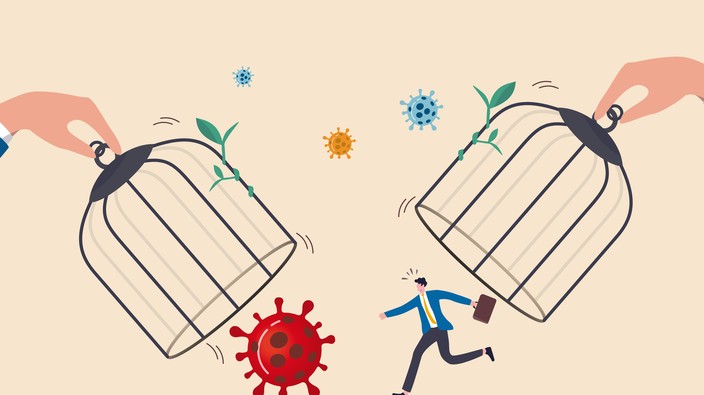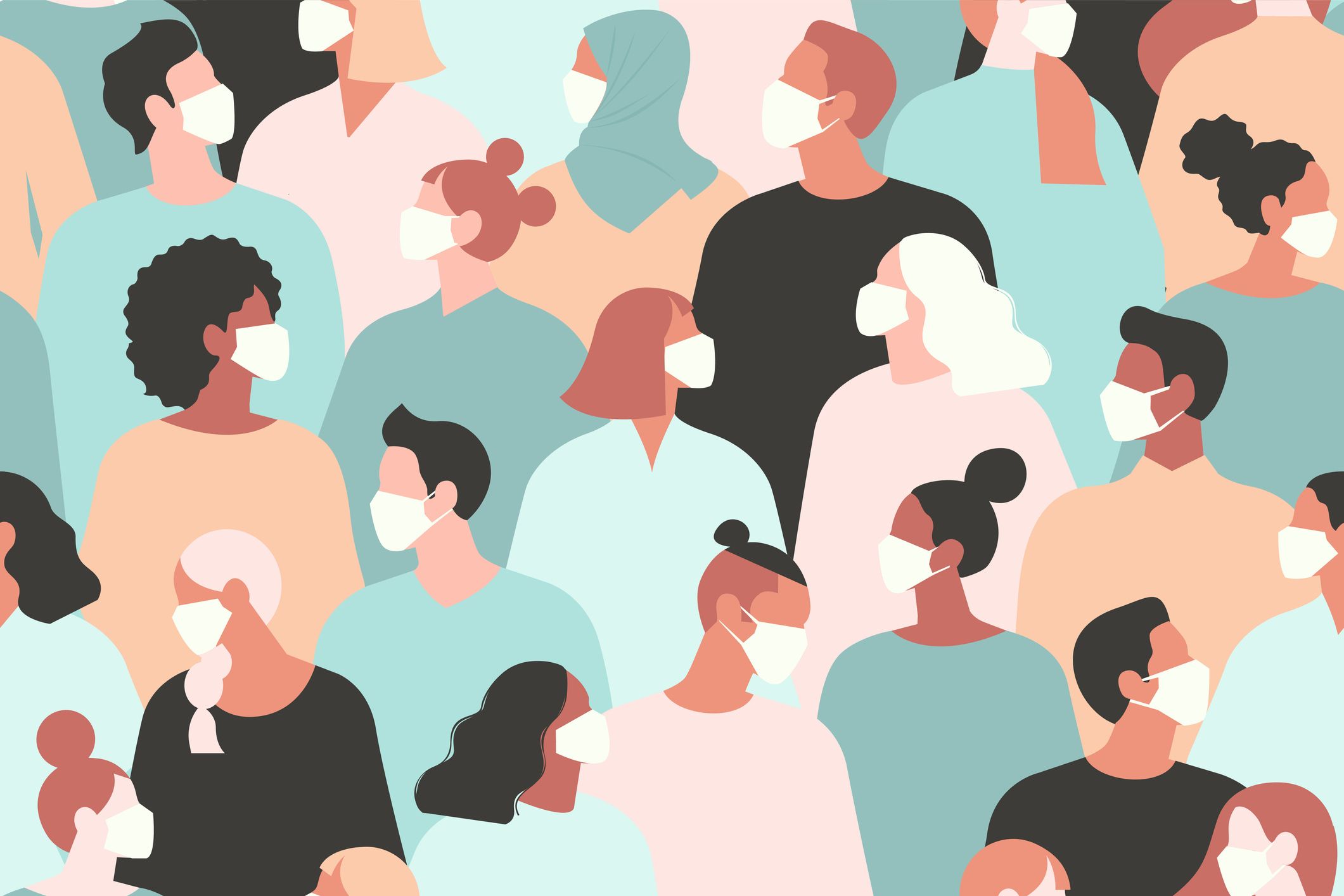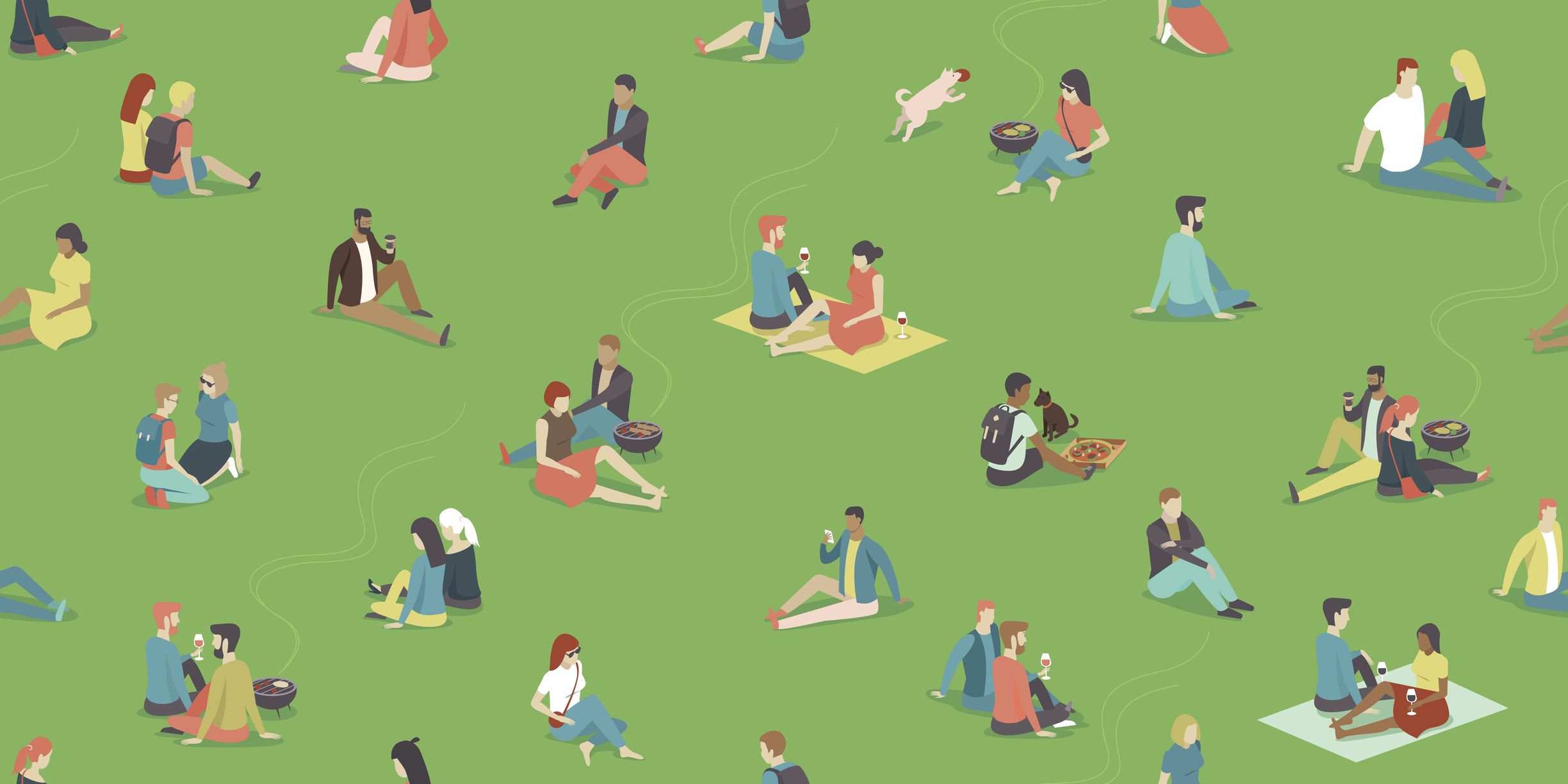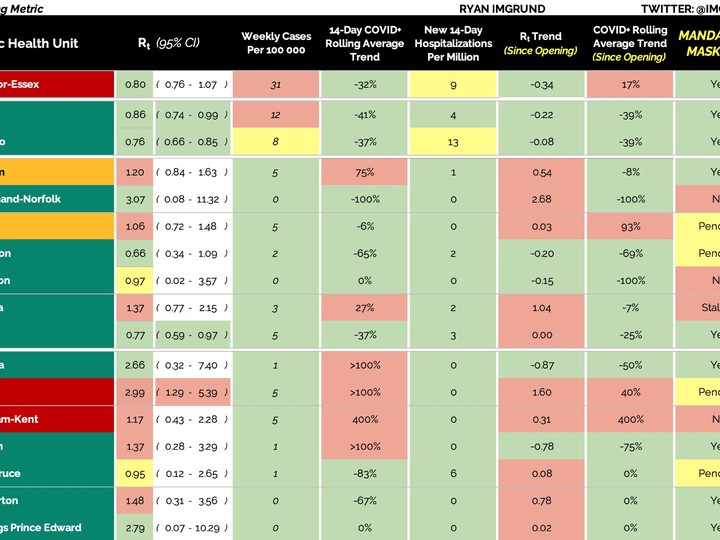this story was updated on july 29.
- what stage 3 entails — and where it will start
- how to determine what is safe and minimize your risk of covid-19
- how to find the rt value in your community
two more regions of ontario are moving to
stage three of phase two reopening on friday, july 31.
toronto and peel region are moving into stage three on midnight this friday, joining 31 other health regions. windsor-essex county will remain in stage two.gathering limits will be increased to 50 people maximum indoors and 100 people maximum outdoors. however, two-metre physical distancing is still required as well as
wearing face masks if physical distancing is not possible. strangely, staff at establishments such as casinos, live shows, performing arts and movie theatres do not count towards the gathering limit, even though they are as susceptible to covid-19 as any other person.the gathering limits apply to high-risk settings such as parties, fairs, weddings, funerals, concerts, convention centres, festivals, movie theatres, real estate open houses, sporting events, and gyms. for any event that’s partially indoors, the 50-people maximum indoor gathering limit applies. water parks and amusement parks are not yet allowed to open.“that number, 50, is an arbitrary number. i’m concerned because it’s a large number and i don’t want people hanging out with 50 people indoors,” says
colin furness, assistant professor at the dalla lana school of public health. “economically, i understand the motivation, but from a public health standpoint, i don’t think it’s a great idea.”furness says that the fact that there still remains uncertainty around the safety of opening schools makes him wonder about the safety of opening bars, casinos, and escape rooms because that will elevate the risk of community spread, and affect the possibility of opening schools.“my biggest concern is that we’re not doing schools first,” he says. “once we get schools open and if we can have them fully open and do that for a month without suffering, then i would have a much better appetite for some of the things on the stage three list.”however, furness says he is heartened by ontario’s regional approach to reopening. the risk of community transmission in southern ontario is much higher than in other parts of the province. the few weeks of reopening bars and indoor dining in restaurants may lead to a spike in cases that show the rest of the province to slow down.but for communities up north, where there may not have been a case for months, going to a restaurant may not be that risky. but remember that covid can quickly spread in a short period of time, says
dr. anna banerji, director of global and indigenous health in the faculty of medicine at the university of toronto.although she understands the need to reopen, banerji says it’s important to look at examples in the u.s. and globally to understand how covid-19 is not under control in most places around the world.“when we let down the guard, that’s when covid will resurface,” she says.“we have seen opening of bars and restaurants in the u.s. coinciding with giant spikes of cases,” says furness. “this is not an imaginary risk. this is very real.”
stage three is just another stage
“[stage] three is simply that: another phase. it does not mean a full reopening where we can resort to being complacent. we have seen what has happened in other parts of the world. we need to continue being diligent,” says
ryan imgrund, a biostatistician at southlake regional health centre and department head of science at sacred heart catholic high school in newmarket, ont.“going into [stage] three, monitoring changes in the rt (i.e., the effective reproductive number) is particularly important,” he says. “this is the number of infections attributed to one individual. ideally, we would like rt to drop when we enter phase three but any number less than 1.0 is tolerable. personally, i’d like to see this number at 0.7 for a prolonged period of time.”imgrund, who is monitoring the rt value in all 34 ontario regions on twitter everyday, says ontario should be striving to keep all metrics green — which is a low transmission rate — but it may slip into yellow temporarily as numbers will likely increase with reopening.“if three weeks after opening a region is green, things are coming along well,” he says. “we just need to try and tame them.”
 6 minute read
6 minute read










